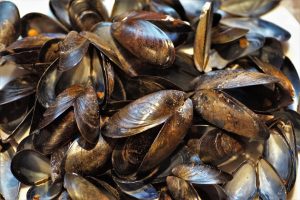Inspiring nature: they develop high-strength ductile materials thanks to mussels
A scientific team from the University of Science and Technology of China has revealed the resistance mechanism of mussel shells. During the ten-year research, it was discovered that mussels have a fan-shaped mineralized membrane composed of fragments of calcium carbonate that, despite their brittleness, resist deformation and continue to function stably. The hinge that joins the shells of mussels deforms up to a million and a half times in its lifetime, but it shows no signs of wear and tear.
The study, published in the journal Science, shows that calcium carbonate fragments are radially aligned and embedded in a resilient matrix in the membrane, which reduces stress and prevents filament breakage. Based on these findings, the researchers have developed a strong fiberglass-polymer-based material that shows no signs of depletion after repeated deformation processes.
This discovery has important implications for the development of high-strength ductile materials. Exhaustion has been a challenge both in the field of materials engineering and for living beings, since fatigue can cause damage or even death in activities that involve load repetitions. The study of the resistance of mussel shells can inspire the design of new materials and structures that are more resistant and durable.
Font: https://www.science.org/doi/10.1126/science.ade2038

